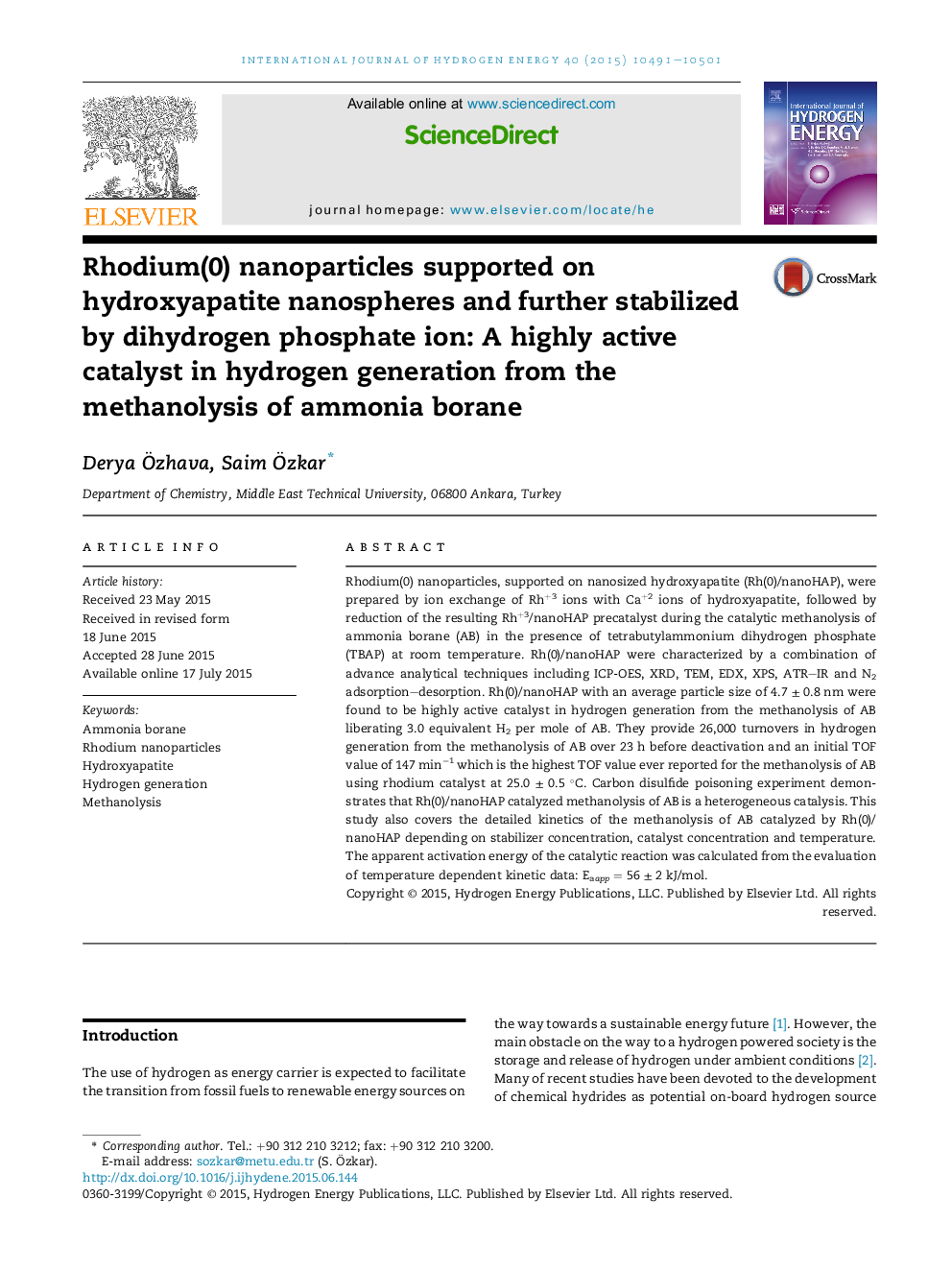| Article ID | Journal | Published Year | Pages | File Type |
|---|---|---|---|---|
| 1279100 | International Journal of Hydrogen Energy | 2015 | 11 Pages |
•Rh(0) nanoparticles supported on hydroxyapatite nanospheres and stabilized by phosphate ion.•Highly active catalyst in hydrogen generation from the methanolysis of ammonia borane.•The highest turnover frequency ever reported for methanolysis of ammonia borane using rhodium.•Kinetics of methanolysis of ammonia borane catalyzed by Rh(0) nanoparticels.
Rhodium(0) nanoparticles, supported on nanosized hydroxyapatite (Rh(0)/nanoHAP), were prepared by ion exchange of Rh+3 ions with Ca+2 ions of hydroxyapatite, followed by reduction of the resulting Rh+3/nanoHAP precatalyst during the catalytic methanolysis of ammonia borane (AB) in the presence of tetrabutylammonium dihydrogen phosphate (TBAP) at room temperature. Rh(0)/nanoHAP were characterized by a combination of advance analytical techniques including ICP-OES, XRD, TEM, EDX, XPS, ATR–IR and N2 adsorption–desorption. Rh(0)/nanoHAP with an average particle size of 4.7 ± 0.8 nm were found to be highly active catalyst in hydrogen generation from the methanolysis of AB liberating 3.0 equivalent H2 per mole of AB. They provide 26,000 turnovers in hydrogen generation from the methanolysis of AB over 23 h before deactivation and an initial TOF value of 147 min−1 which is the highest TOF value ever reported for the methanolysis of AB using rhodium catalyst at 25.0 ± 0.5 °C. Carbon disulfide poisoning experiment demonstrates that Rh(0)/nanoHAP catalyzed methanolysis of AB is a heterogeneous catalysis. This study also covers the detailed kinetics of the methanolysis of AB catalyzed by Rh(0)/nanoHAP depending on stabilizer concentration, catalyst concentration and temperature. The apparent activation energy of the catalytic reaction was calculated from the evaluation of temperature dependent kinetic data: Eaapp = 56 ± 2 kJ/mol.
Graphical abstractFigure optionsDownload full-size imageDownload as PowerPoint slide
